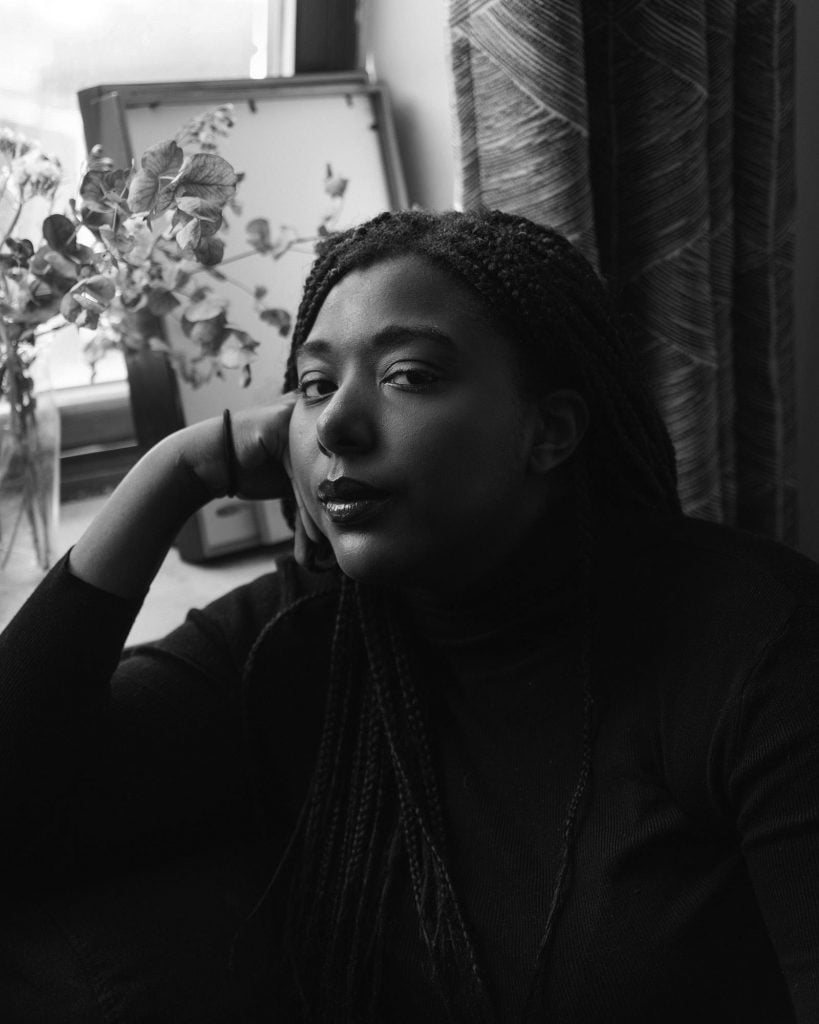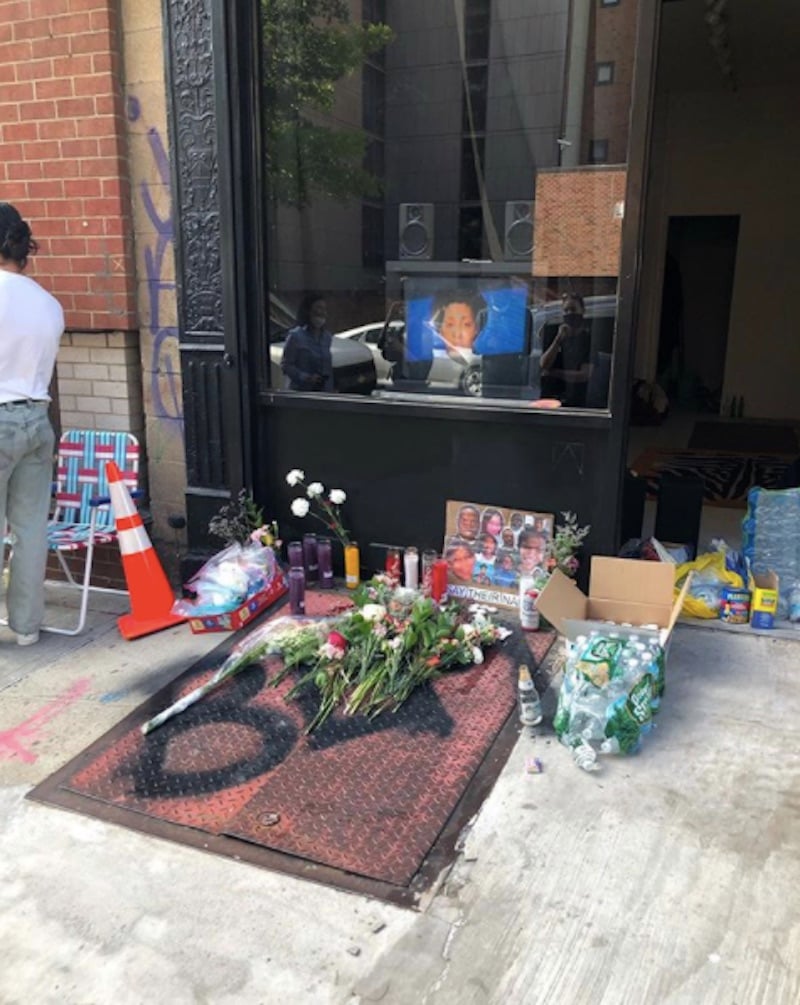Art World
New York’s Experimental HOUSING Gallery Is Organizing Mutual Aid and Using Its Storefront to Supply Protesters
The hybrid space has just opened on the Lower East Side—and already made serious moves to address the moment.

The hybrid space has just opened on the Lower East Side—and already made serious moves to address the moment.

Rain Embuscado

Alexander Richard Wilson entered life under quarantine in a state of precarity. The artist is based in Chicago, a city fully enmeshed with the corrosive structural racism that underlies American civic life—and against this backdrop, Wilson was one of millions across the country running on short supply of food.
To make ends meet, they turned to selling drawings online to supplement their income as a part-timer for artist Eric Gushee‘s studio (where they formerly served as manager). “In the midst of [the pandemic], I just needed enough money to go to the grocery store and come back,” Wilson said. “And that’s just as much a part of the racial inequity as anything else in a national sense.”
Much-needed financial relief arrived for Wilson with a phone call from KJ Freeman, an old college friend and a driving force behind New York’s HOUSING gallery. Anticipating the economic implications of the coronavirus, Freeman acted swiftly to establish a mutual aid fund. To date, Freeman has provided Wilson with two microgrants for basic necessities.
“It was an incredibly touching moment that helped me remember the extent of my network,” Wilson said, adding that the gesture highlighted the “importance of Black supporting Black.”
“[Freeman] is providing a service,” Wilson said. “It’s about making sure that people are at least able to get to the next day.”
Since its inception in 2016, HOUSING has been something of a north star for Black artists and artists of color railing against gentrification in New York. HOUSING’s story places it in direct opposition to art world capitalism and its attendant features: it is a Black-owned, curatorially driven hybrid gallery championing BIPOC artists.
HOUSING has also participated in fairs from Miami to San Juan to Barcelona. Since the closure of its original Bed-Stuy space in 2017, it has functioned as a “migratory, concept-based gallery.” But the coronavirus pandemic, and its impact on disenfranchised citizens living and working on the frontlines, compelled Freeman to pause HOUSING’s regular programming.
“I thought it was important to begin a fund for people of color that was not tied to some regular entity, like, say, a nonprofit, which can be so political and draining and delay the timeframe of when someone gets money,” Freeman said. “It was important to advocate for those who might not have gotten their stimulus check, or who might not have been working in the last year; people who maybe didn’t do their taxes. Getting the stimulus check and getting government aid was based on all of these aspects that not everyone qualified for.”
According to Freeman, recipients of the microgrants that she and collaborator Shani Strand raised money for came down to “whoever emailed.” The fund, which had collected just over $5,000 in donations at the time of publication, is still going.
Then, on May 25, the specter of police brutality reared its head and the country erupted into an unprecedented outcry. The nationwide uprising around George Floyd’s death prompted HOUSING to mobilize as a community node once more.
On Sunday, June 7, the gallery inaugurated a three-year lease on its newest location in Manhattan’s Lower East Side at 191 Henry Street with an evening titled “Vigil for Black Death.” With contributions from artists Keijaun Thomas, Baseera Khan, and Sofia Moreno (among others), the ceremony featured a reel of video works on display from behind the space’s storefront window.

Street view of Vigil for Black Death. Courtesy HOUSING.
But perhaps even more importantly, the temporary space was activated in another way amid the ongoing protests. It has served as a base to distribute bottled water and supplies, and a site to regroup for protesters on the ground.
“We had a vigil [outside of the gallery], and people in the area were picking up [supply] packs outside,” Freeman said. From protesters needing a bathroom to use to community members looking for a place to pause, HOUSING’s doors are, she says, open to all seeking community and support.
She adds that the video in the window will continue to run until “there’s systemic justice for disenfranchised and marginalized people in the United States.”
With a solo exhibition of Nathaniel Oliver’s works set for this September, Freeman plans on sustaining HOUSING’s curatorial program and responsibilities to community simultaneously, all guided by the knowledge that the fight to dismantle and reimagine the art world (and the country) is neither new nor over.
“I want Black and Brown artists to feel loved,” Freeman said. “I want them to know that there are people who are fighting for them in an authentic and genuine way that’s not tied to how much money they can make off of them.”